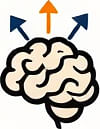Strategies for Building a High-Agency Mindset
 by Marlene Keeling
by Marlene Keeling
Discover practical drills to foster a high-agency mindset, empowering you to take charge of your decisions and outcomes. This guide offers actionable steps for ambitious professionals seeking growth and control in their lives. Learn how daily exercises can transform your approach to challenges and success.

A high-agency mindset involves actively shaping your life through choices and actions. This approach helps individuals drive their own progress. To start, focus on daily routines that build momentum.
One effective drill is the morning reflection exercise. Begin each day by listing three key actions you will take. This practice reinforces personal control and sets a positive tone. For instance, write down tasks that align with your goals, ensuring they are specific and achievable.
Next, consider decision-making drills. Practice scenarios where you must choose quickly and confidently. Simulate real-life situations, such as career choices or personal challenges. This helps in developing resilience and clarity. Use a simple journal to track these decisions and their results.
In building this mindset, overcoming hesitation is crucial. Try the five-second rule drill: when facing a decision, count down from five and act. This technique, often used by successful people, breaks patterns of overthinking.
Another strategy involves goal-setting sessions. Hold weekly reviews where you assess progress and adjust plans. Make these sessions focused and honest, emphasizing accountability. For example, if a goal like improving skills stalls, identify barriers and create immediate steps to address them.
Physical activities can also support mental strength. Incorporate exercises like short walks or workouts that require focus and determination. These habits build the mental fortitude needed for a high-agency mindset.
To enhance this further, use visualization techniques. Spend a few minutes daily picturing yourself succeeding in your endeavors. This mental rehearsal prepares you for real-world application and boosts confidence.
Group drills offer additional benefits. Join or form accountability groups where members share progress and encourage each other. This creates a supportive environment that fosters growth. For professionals, this might mean discussing work strategies with peers.
Handling setbacks is part of the process. Develop a response plan for failures, turning them into learning opportunities. After any setback, analyze what happened and plan your next move. This keeps you moving forward.
Daily affirmations can reinforce your mindset. Repeat statements that affirm your ability to influence outcomes. Keep them simple and tied to your experiences.
For deeper practice, try role-playing exercises. Act out scenarios where you take the lead, such as leading a team or negotiating outcomes. This builds practical skills and confidence in social settings.
Tracking progress is essential. Maintain a log of your actions and their impacts over time. Review it monthly to see improvements and areas for growth.
Incorporate mindfulness practices to maintain focus. Short meditation sessions can clear your mind, allowing better decision-making. This supports long-term development of a high-agency mindset.
Finally, celebrate small wins. Recognizing achievements, no matter the size, motivates continued effort. This positive reinforcement sustains your drive.
Key Drills to Implement
- Morning reflection: List three actions daily.
- Decision-making scenarios: Practice quick choices in simulated situations.
- Five-second rule: Act immediately after counting down.
- Weekly goal reviews: Assess and adjust your plans.
- Physical routines: Engage in focused exercises for mental strength.
- Visualization: Picture success to build confidence.
- Accountability groups: Share progress with others.
- Setback analysis: Learn from failures and plan ahead.
- Affirmations: Use positive statements for reinforcement.
- Role-playing: Practice taking charge in various scenarios.
- Progress tracking: Log and review your advancements.
- Mindfulness sessions: Meditate to enhance focus.
- Win celebrations: Acknowledge successes to stay motivated.
By consistently applying these strategies, you can cultivate a mindset that empowers lasting change.
